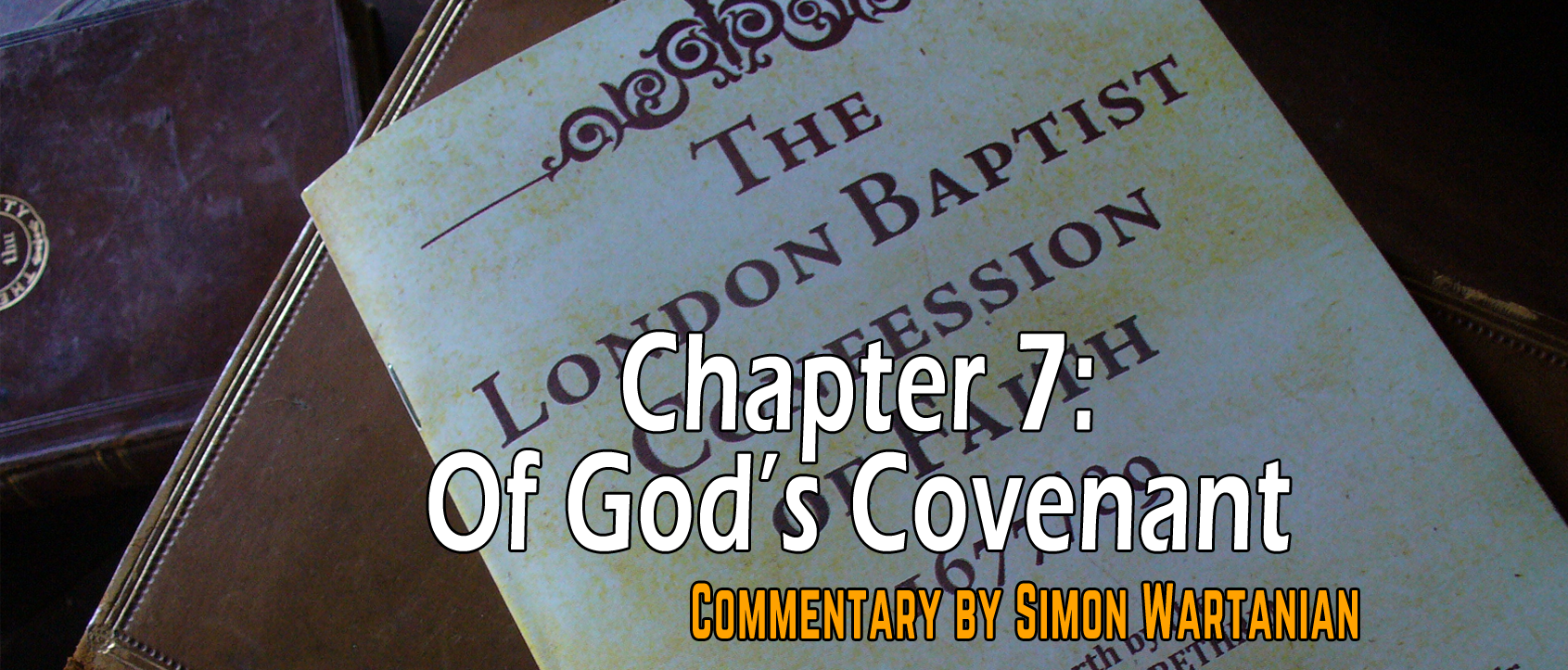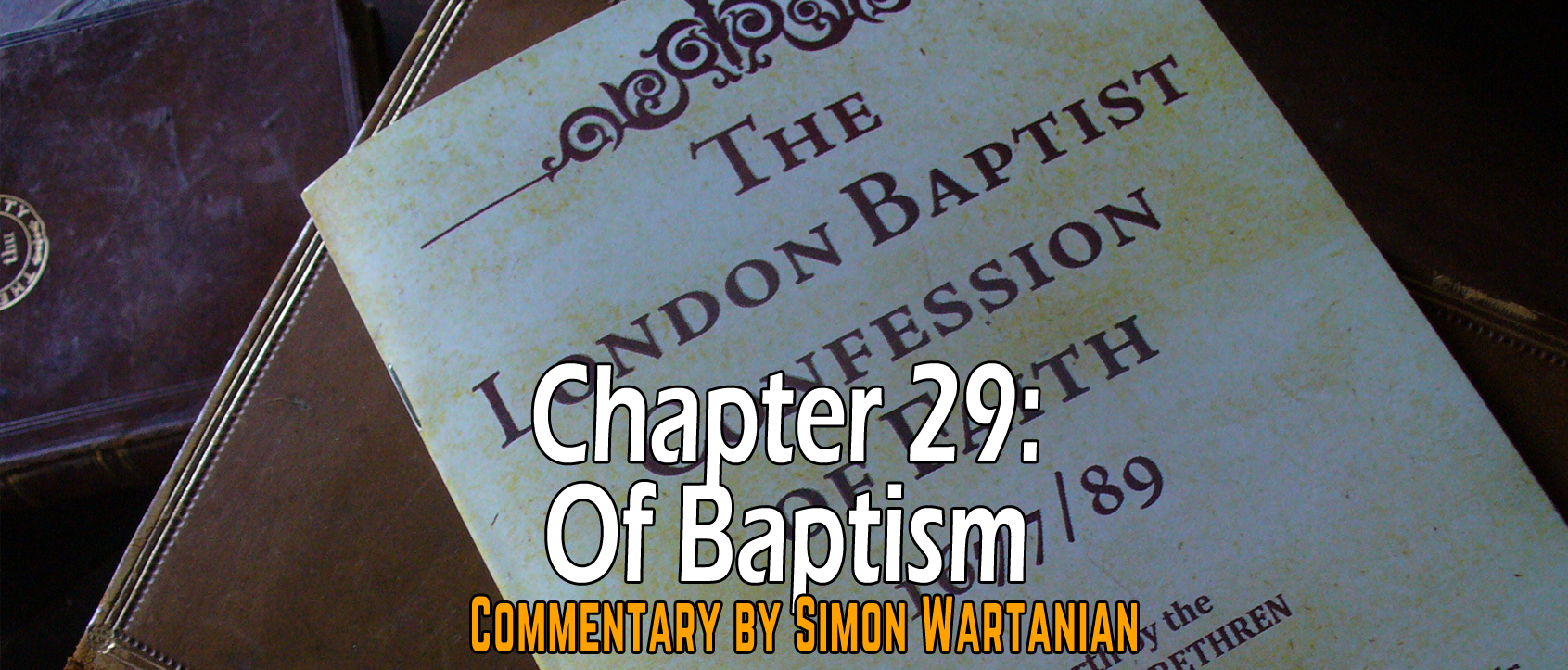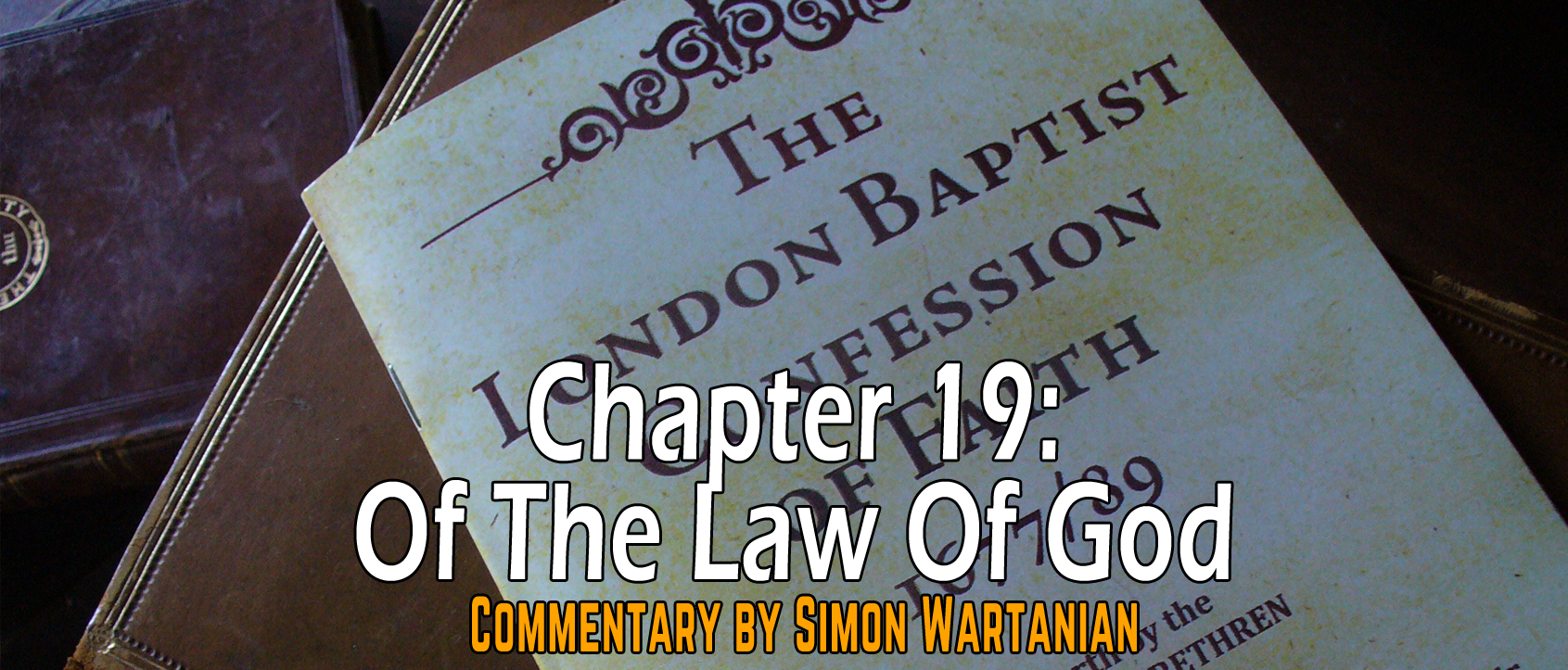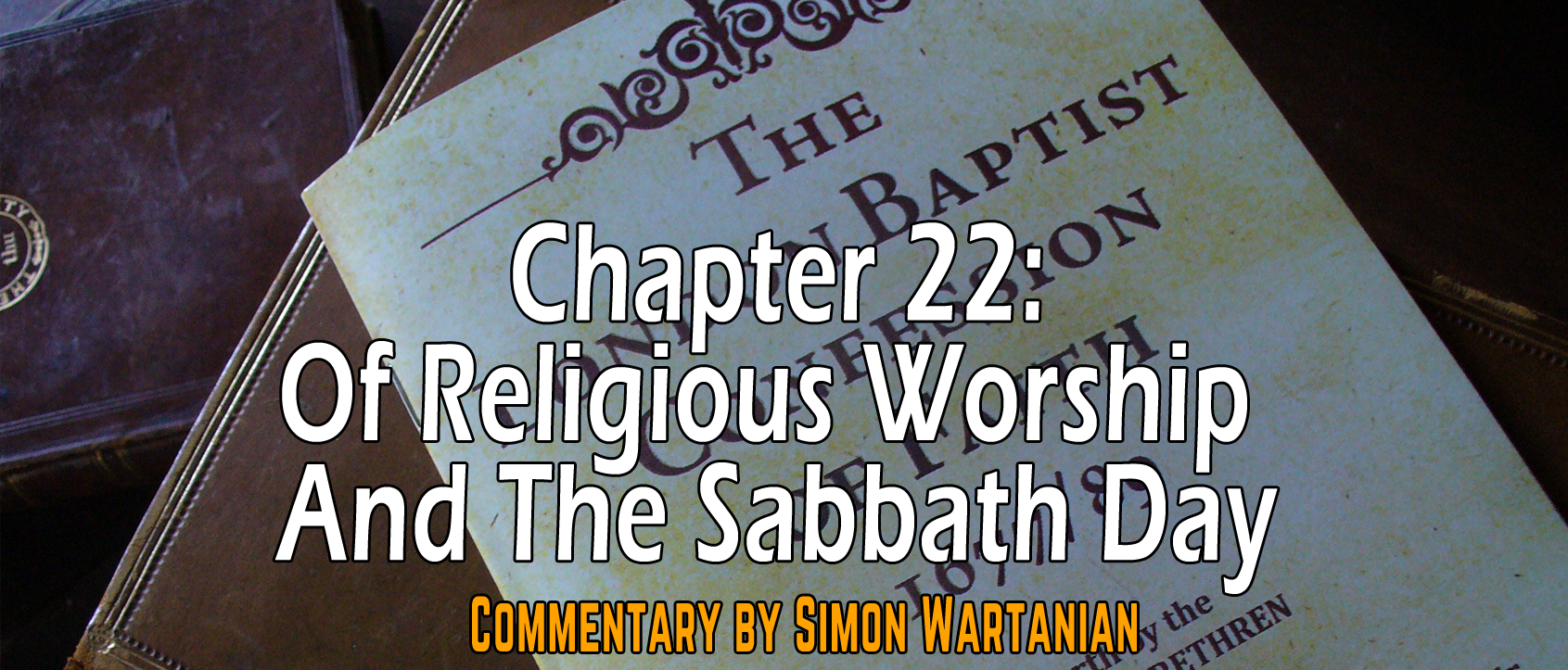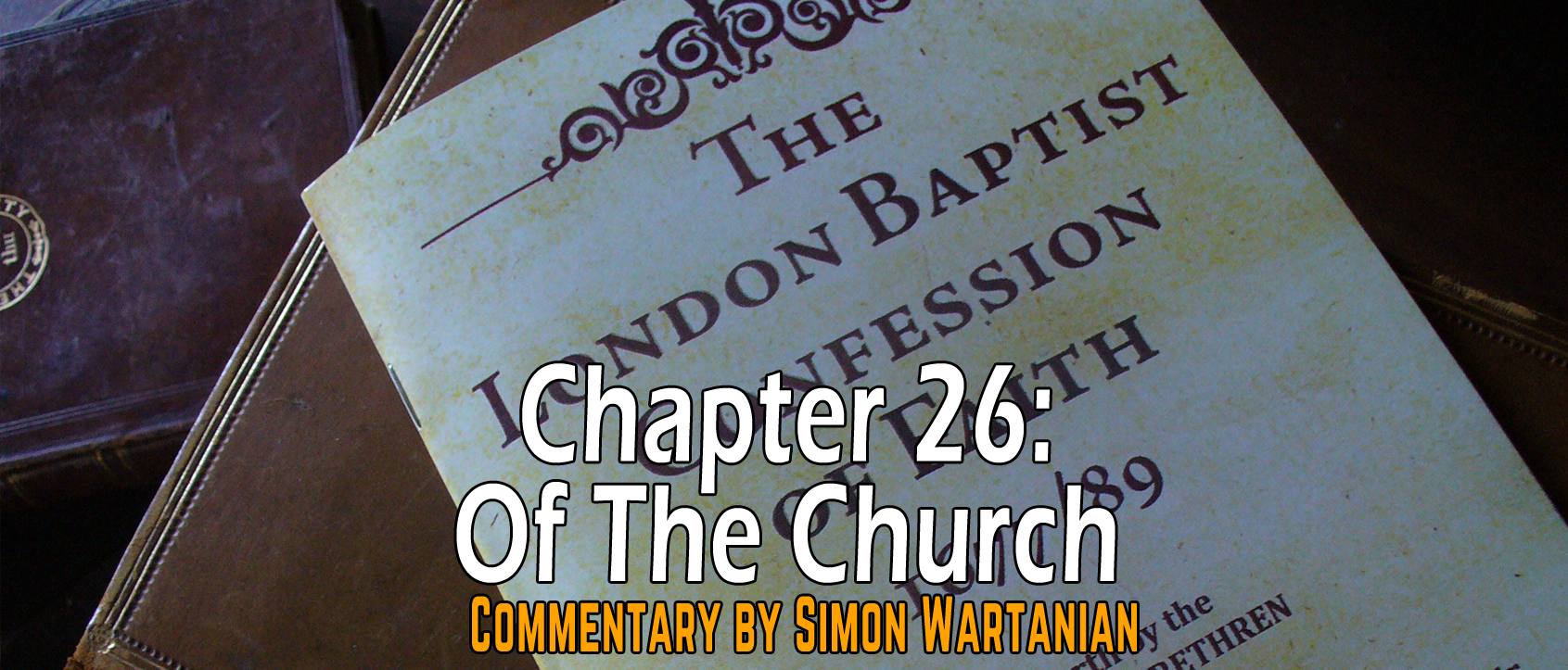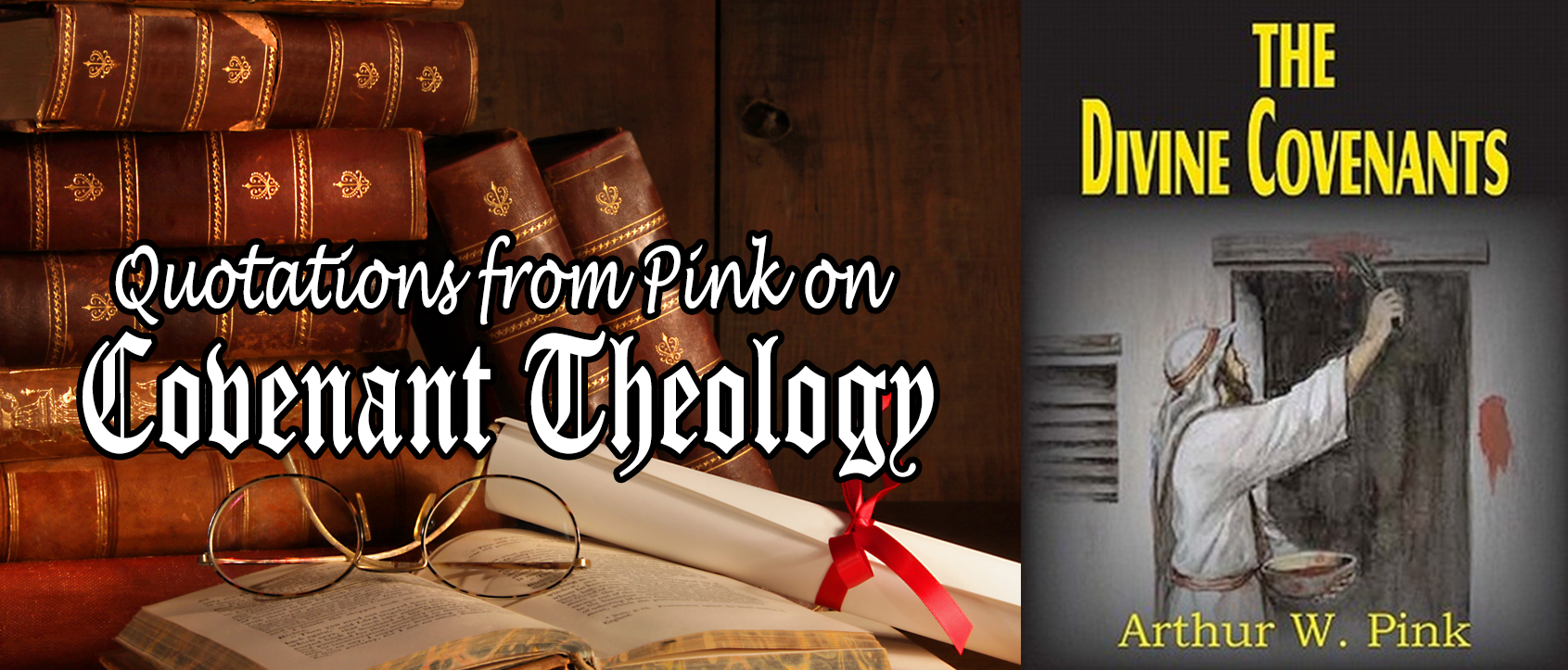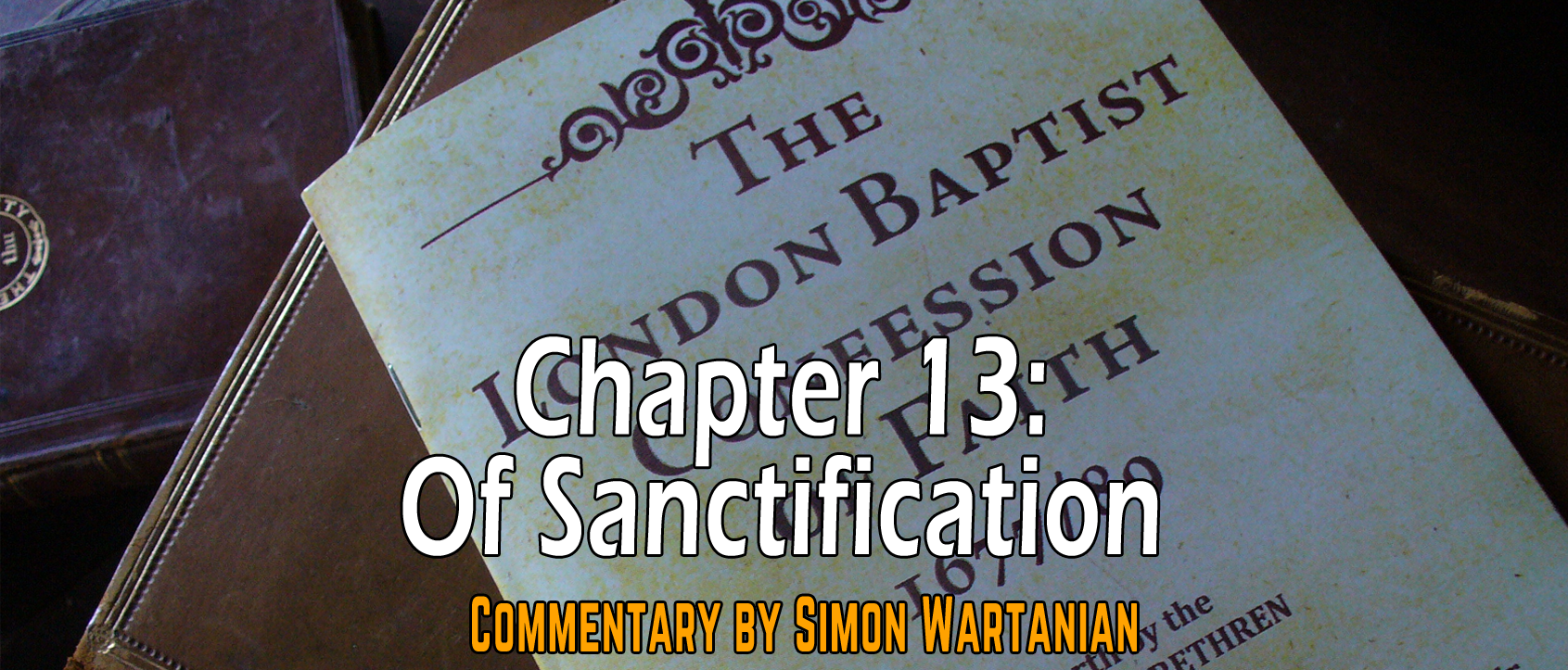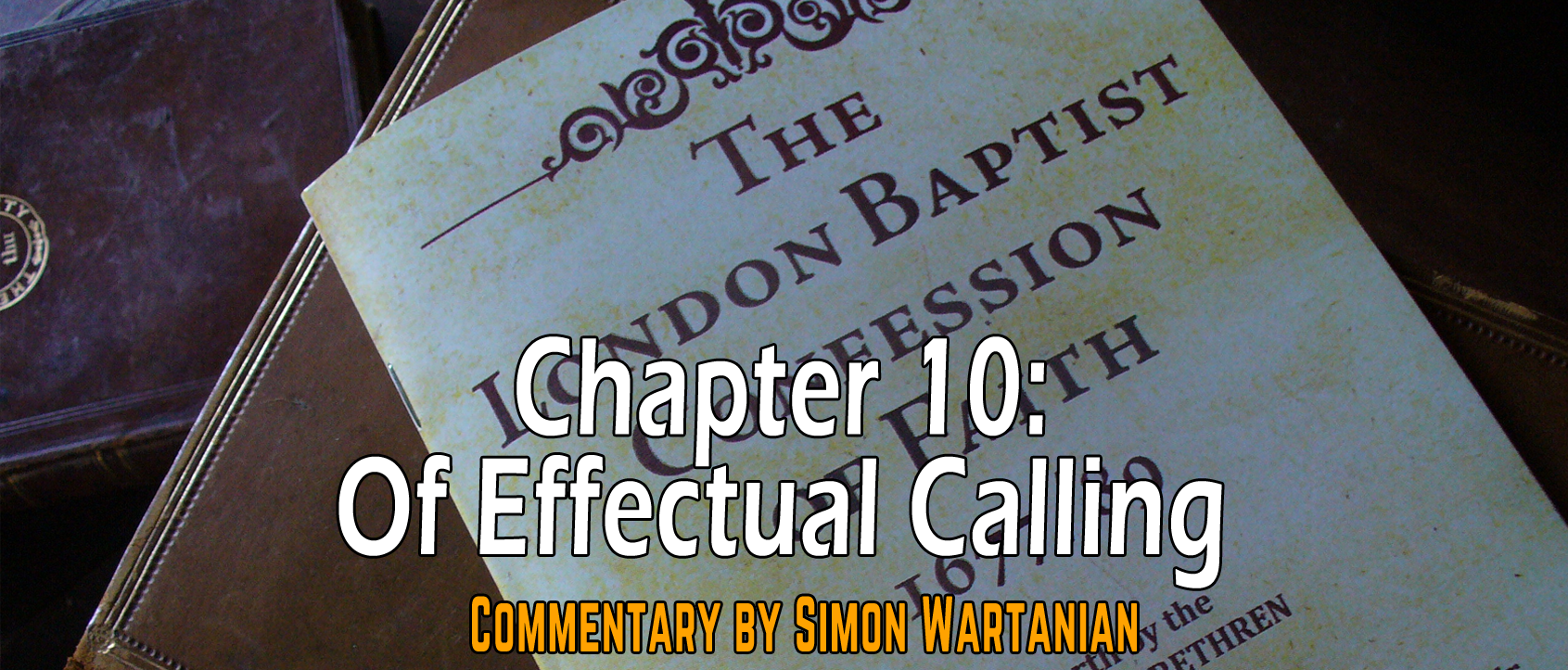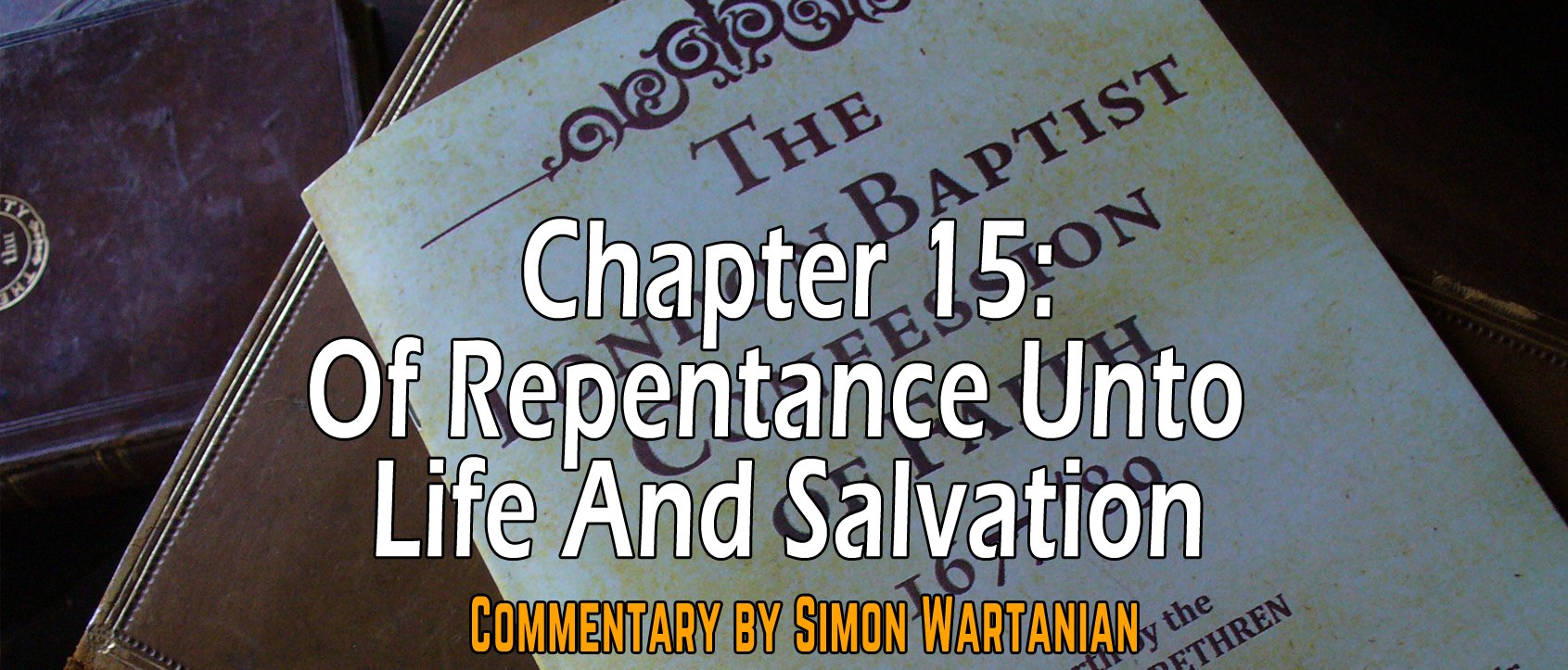Search
You searched for 'Westminster'
I've found 36 results!
Although it was really nice to know about all the different positions about infant baptism, the author seeks to directly combat one position and that is the Westminster position (positions 4 and 5). It’s not like from the earliest days of infant baptism that the church understood it was the sign of the Covenant of Grace, or that it did not wash away sin. That is clearly not the case.
The old church practiced infant baptism for other reasons, than the Reformed Paedobaptist churches since the Reformation.
Although I do not believe that infant baptism is a biblical practice, but I must agree with Jeffery Johnson that the Westminster position of Covenant Theology and infant baptism is the closest to the Scripture from the above options. For some people to be truly “Reformed” you have to hold to Covenant Theology which supports the pract...
Signs And Seal Of The Covenant
It is said in the Westminster Confession 28:1 that baptism is “a sign and seal of the covenant of grace” and in 27:1 that the “Sacraments are holy signs and seals of the covenant of grace.” The 1689 omits these two things in its respective chapters, but does this entail a denial and rejection of these things? I believe that it does entail a denial of some aspects, but not an entire denial. Baptists reject that baptism functions as a seal of the Covenant of Grace, rather, it is the Holy Spirit Who is said to be the seal on believers in the New Testament. The same is true for the Lord’s Supper; it is not a seal of the New Covenant, but the Holy Spirit is the seal. But we do believe that the holy ordinances do function as signs of the New Covenant.
In 1689 Federalist understanding, the Covenant of Grace is the New Covenant before it was formally established in the blood of Christ. In contrast, Westminster Federalism teaches that the New Covenant is the last and final administration of the Covenant of Grace. Westminster Federalism teaches that the Abrahamic, Mosaic, Davidic covenants were administrations of the Covenant of Grace. But the Covenant of Grace reaches its final administration and revelation in the New Covenant. But we, 1689 Federalists, deny this. We believe rather that the New Covenant/Covenant of Grace was revealed in these covenants and the blessings thereof given to the elect, but not because of the covenant they found themselves in, but because they believed the promise. We believe that the Covenant of Grace, prior to the cross, existed in promise form, and not an established covenant. As John Owen said, “Believers were saved under it [the Mosaic Covenant], but not by virtue of it. Sinners perished eternally under it, but by the curse of the original law of works.”[24] See more on 1689 Federalism and the case for it in chapter 7.
Signs
What do we actually mean by a sign and a seal? A sign is something visible which points to inward and spiritual realities. The rainbow was the visible sign of the Noahic Covenant, it functioned as a token (“Something serving as an indication, proof, or expression of something else”[25]) that God will not destroy the earth by water again (Gen. 9:13-17). Circumcision functioned as a visible sign of the Abrahamic Covenant, which symbolized the need to be cleansed from sin through blood-spilling. For Abraham, it was a sign and a seal of the faith which he had prior to circumcision (Rom. 4:11). The Sabbath functioned as a visible sign of the Mosaic Covenant. It functioned as a sign that God had set His people apart (Ex. 31:12-17; Ezek. 20:12, 20). There is no sign mentioned in connection with the Davidic or the New Covenant explicitly. But the throne would probably fit as a visible sign for David that he will always have someone from his posterity to sit on it and rule over Israel. As for the Ne...
Protestant Scholasticism taught that the Decalogue summarily contains the Moral Law and is the inscripturated form of the natural law, as to its substance. A distinction was made between substance and form. Substance is one; form (and function) may vary. For example, when the Westminster Larger Catechism Q. 98 says, “The moral law is summarily comprehended in the ten commandments,” it refers to the fact that the substance (i.e., the underlying essence) of the Moral Law is assumed and articulated in the propositions of the Decalogue as contained in Exodus 20 and Deuteronomy 5. The form (and function) fits the redemptive-historical circumstances in which it was given. The substance, or underlying principles, are always relevant and applicable to man because he is created in the image of God. The application may shift based on redemptive-historical changes, such as the inauguration of the New Covenant, but its substance and utility never changes.[1]
Moral Law
The Moral Law, on the other hand, is the Law which is revealed and summarized by God in the Ten Commandments, the Decalogue, which is the substance of the Natural Law. Richard Muller is quoted in Barcellos on the definition of the Moral Law, saying:
specifically and predominantly, the Decalogus, or Ten Commandments; also called the lex Mosaica …, as distinct from the lex ceremonialis …and the lex civilis, or civil law. The lex moralis, which is primarily intended to regulate morals, is known to the synderesis [the innate habit of understanding basic principles of moral law] and is the basis of the acts of conscientia [conscience–the application of the innate habit above]. In substance, the lex moralis is identical with the lex naturalis …but, unlike the natural law, it is given by revelation in a form which is clearer and fuller than that otherwise known to the reason.[2]
And then Dr. Barcellos adds:
As noted above, the Moral Law is summarily comprehended in the Decalogue, not exhausted by it. Though the formal promulgation of the Decalogue had a unique redemptive-historical context and use, it is nothing other than the Natural Law incorporated into the Mosaic Covenant. This is one of its uses in the Bible but not all of its uses.
The Decalogue contains the summary and the essence of the Moral Law, but it does not contain all the moral laws. For example, there is no “thou shalt respect elders”, but we understand that this is comprehended under the fifth commandment to honor our parents, and derived from it.
Positive Law
Positive Law simply said is a moral law that has no basis in nature nor is it self-evident, but is based upon a commandment of God. Dr. Barcellos defines positive laws as:
Positive laws are those laws added to the Natural or Moral Law. They are dependent upon the will of God. These laws are “good because God commands them.” They become just because commanded. The first Positive Laws were given to Adam in the Garden (Gen. 1:28; 2:17), as far as we know. Subsequent Positive Laws are spread throughout the Old and New Testaments. Positive laws can be abrogated for various reasons. They are not necessarily universal or perpetual. Some obvious illustrations of Positive Law in the Old Testament are circumcision and ...
Question 109: What are the sins forbidden in the second commandment?
Answer: The sins forbidden in the second commandment are, all devising, counseling, commanding, using, and anywise approving, any religious worship not instituted by God himself; tolerating a false religion; the making any representation of God, of all or of any of the three persons, either inwardly in our mind, or outwardly in any kind of image or likeness of any creature: Whatsoever; all worshiping of it, or God in it or by it; the making of any representation of feigned deities, and all worship of them, or service belonging to them; all superstitious devices, corrupting the worship of God, adding to it, or taking from it, whether invented and taken up of ourselves, or received by tradition from others, though under the title of antiquity, custom, devotion, good intent, or any other pretense: Whatsoever; simony; sacrilege; all neglect, contempt, hindering, and opposing the worship and ordinances which God has appointed.[8]
Nadab and Abihu
Lev. 10:1-3 Now Nadab and Abihu, the sons of Aaron, each took his censer and put fire in it and laid incense on it and offered unauthorized fire before the LORD, which he had not commanded them. 2 And fire came out from before the LORD and consumed them, and they died before the LORD. 3 Then Moses said to Aaron, “This is what the LORD has said: ‘Among those who are near me I will be sanctified, and before all the people I will be glorified.’” And Aaron held his peace.
I think the clearest and most cited example of the Regulative Principle of Worship is the case of Nadab and Abihu. In a sense, you may have sympathy with them and we may see the reaction of God as over the top. But then again, as priests, they had to listen carefully to what God commanded and do that, not turning to the right or to the left. ‘The mere fact that they dared to bring “unauthorized fire” (the translation of the NIV) brought fiery death upon them.’[9]In this case, as was with Cain and Abel, we have the principle of “what is not commanded, is forbidden.”

In Exodus 24:1, Nadab and Abihu are explicitly mentioned and commanded to come and worship in the very presence of God. In fact, the text says “they saw the God of Israel” (Ex. 24:9-10). In Exodus 28:1, they were instituted as priests to the Lord. But in Leviticus 10 we read of the action which brought their immediate death. They dared bring something to the worship of God which He had not commanded. There is not a command that no other fire may be presented before the Lord. The fire which Nadab and Abihu brought was not from the fire which the LORD sent from heaven:
Lev. 9:24 And fire came out from before the LORD and consumed the burnt offering and the pieces of fat on the altar, and when a...
Paragraph 1 spoke of the church as God views it. The universal church consists only of regenerate believers. Those believers have been predestined from all eternity to be Christ’s. They are the bride and the church for whom His life was given (Eph. 5:25-27). The Spirit of God regenerates them and gives them new life according to the New Covenant promises (Jer. 31:31-34; Ezek. 36:25-27). But it would be wrong to think of the invisible or universal church as something that does not exist in the world, as something which is merely in the mind of God or the mind of the theologian. That is wrong. This paragraph teaches that the church of paragraph 1 (the universal church) becomes visible. The invisible church exists truly in time and history. It is the church both of living believers as well as glorified believers in heaven. But this invisible church becomes visible in the local church. Those who are called to the universal church of God are likewise called to the visible church and thus to be “visible saints.” One enters into the body of Christ, the universal church, by regeneration and by the Holy Spirit’s work (e.g., 1 Cor. 12:13). But entrance to the local or visible church is by profession of faith and baptism, which is a sign of new life. Louis Berkhof beautifully expresses this:
The invisible Church naturally assumes a visible form. Just as the human soul is adapted to a body and expresses itself through the body, so the invisible Church, consisting, not of mere souls but of human beings having souls and bodies, necessarily assumes a visible form in an external organization through which it expresses itself. The Church becomes visible in Christian profession and conduct, in the ministry of the Word and of the sacraments, and in external organization and government.[15]
The two ways of seeing the church, invisible and visible, do not speak of two churches. Christ has one church for whom He gave His life (Matt. 16:18; Eph. 5:25). Ideally, only those who belong to the invisible church should be members of the visible church. Since the universal church consists of born-again, Spirit-indwelt, united-to-Christ believers, why should its visible manifestation be any other? But we’ve said over and over again that the invisible church is the church as God infallibly sees it. God has not granted us the gift of infallibility. Therefore, how are we to know who should belong to a v...
It has been argued by Brandon Adams that the major theses of Pink was consistent with 1689 Federalism, which teaches that only the New Covenant is the Covenant of Grace. All the other OT covenants were not “administrations” of the Covenant of Grace. You will not find in this work the model of “one covenant, multiple administrations” that is associated with Westminster Federalism. Rather, you will find that all of the OT covenants “adumbrated” the “everlasting covenant of grace”, were subservient to the divine purpose of mercy and grace and contained gracious promises.
There are some statements which could be interpreted in favor of Westminster Federalism, which I have also included under the heading “Westminster Sounding Statements”. But in reading these we must keep in mind the main theses of the work and how Pink uses certain words, for example, “administration.” I do believe that a fair interpretation can be given to these statements without doing violence to the meaning of Pink, but I’ll leave that task to the interested reader.
One difficult statement for me to interpret has to do with the idea of “renewal.” For example:
Just as the various Messianic prophecies, given by God at different times and at wide intervals, were suited to the local occasions when they were first made, so it was in the different renewals of His covenant of grace. Each of those renewals—unto Abraham, Moses, David and so forth—adumbrated some special feature of the everlasting covenant into which God had entered with the Mediator; but the immediate circumstances of each of those favored men molded, or gave form to, each particular feature of the eternal agreement which was severally shadowed forth unto them.[1]
What does Pink mean by “renewal”? It seems to be “adumbrating” (an old word which he uses a lot meaning “disclose, foreshadow”) features from the Covenant of Grace. This is confirmed when we look to the chapters on those covenants which he mentions in the above citations. These covenants are subordinate to the ultimate “everlasting covenant of grace” and reveal it, but they are distinguished. The idea of “renewal” being a further adumbration of the Covenant of Grace is also confirmed in another quote:
They were all of them revelations of God’s gracious purpose, exhibited at first in an obscure form, but unfolding according to an obvious law of progress: each renewal adding something to what was previously known, so that the path of the just was as the shining light, which shone more and more unto the perfect day, when the shadows were displaced by the substance itself.[1]
Therefore, Pink probably does not give “renewal” the same definition as our Westminster Federalism brothers, which is to establish or administer (in the sense of WCF 7:5-6) the one Covenant of Grace. But the...
Sanctification
The answer to question 35 “What is sanctification?” of the Westminster Shorter Catechism is as follows:
Sanctification is the work of God’s free grace, whereby we are renewed in the whole man after the image of God, and are enabled more and more to die unto sin, and live unto righteousness.[2]
Having this definition, we can say that sanctification is a work of renewal and enablement. This enablement is twofold: to die unto sin and to live unto righteousness. It is a work of life and death by God. But before we dive into sanctification and its effect, we must first note that “to sanctify” something is to “make it holy”.
Holiness
Sanctification has to do with making or declaring holy. Holiness essentially has to do with “otherness” or setting apart. This idea is conveyed in the Old Testament by the use of words like:
- consecrate (e.g. firstborn [Ex. 13:2]; the people of Israel [Ex. 19:10; Josh. 3:5; 7:13], the priests [Ex. 19:10, 22; 28:3]; Mt. Sinai [Ex. 19:23]; gifts [Ex. 28:38]; offering [Ex. 29:27]; Passover lamb [2 Chron. 30:17]; altar [Ex. 29:36, 27, 44]; the tent of meeting and all its items [Ex. 30:26-29]; the temple [2 Chron. 29:5]; a fast [Joel 1:14; 2:15]),
- set apart (e.g. Israel and the godly [Gen. 49:26; Deut. 10:8; Ps. 4:3]; priests [Num. 16:9]; musicians [1 Chron. 25:1]; land [Ex. 8:22]; newborn of man and beast [Ex. 13:12]; animals [Lev. 20:25]; cities [Deut. 4:41; Josh. 16:9]),
- separate (e.g. Israel [Lev. 15:31; 20:24, 26]; priests [Num. 8:14; 1 Chron. 23:13]; animals [Lev. 20:25]; Nazarite [Num. 6:2, 3, 12]; a portion of the temple [Ezek. 48:21-22]).
While our initial idea may be that of making people holy or setting people apart, the usage of these words is very wide, ranging from people to things. If we consider the usage of the word “holy” then this would encompass these things above and even more. The basic idea conveyed from these passages is that a thing or a person is separated from a common purpose and given another purpose and it or they belong to another, e.g. God. William D. Mounce explains the concept of holiness and the Hebrew word used in the Old Testament:
Generally, qados [which is used 117 times] is translated as “holy,” “holy one,” or “saint.” It describes that which is by nature sacred or that which has been admitted to the sphere of the sacred by divine rite. It describes, therefore, that which is distinct or separate from the common or profane.[3]
All over the Bible, God is said to be holy. He Himself provides the standard which our holiness or the holiness of things are measured against. He is said to be “Holy, holy, holy” (Isa. 6:3; Rev. 4:8). It is the only attribute of God that is raised to the third repetition. It is not an attribute among many others. Rather, it is the attribute that encompasses all others. His love is holy; His justice is holy; His grace is holy; His wrath is holy and so forth. Holiness to God means that is He is morally perfect, other and separated from sinners. J. I. Packer explains:
When Scripture calls God, or individual persons of the Godhead, “holy” (as it often does: Lev. 11:44-45; Josh. 24:19; Isa. 2:2; Ps. 99:9; Isa. 1:4; 6:3; 41:14, 16, 20; 57:15; Ezek. 39:7; Amos 4:2; John 17:11; Acts 5:3-4, 32; Rev. 15:4), the wo...
The Phrasing of the Confession
It seems that most copies of the 1689 contain the word “elect” before “infants.” Spurgeon’s version does not contain it. Dr. Sam. Waldron says that indeed the phrase “elect infants” was in the original 1677/89.[2] The phrase “elect infants” is original and not a later addition as is evident from the sister confessions (the Westminster and Savoy confessions). This merely shows the caution that the framers took in making a statement upon a subject which is not as clear in Holy Scripture. I do not believe that by saying “elect infants” they assumed that all other infants were in damnation. Rather, by “elect” they wanted to assert that their salvation is solely by grace and not through deserving it or merit, even if they die in infancy. Furthermore, the phrase is placed in contrast to “elect infants living to grow up.” Those elect infants will be called by the ministry of the Word and Spirit as paragraph 1 makes clear.
In the following paragraphs, I’m going to argue the case that Pastor MacArthur made in Safe in the Arms of God. I think that he made a decent biblical case for infant salvation. I do not mean that he answered every question that could be posed, but I thought it was a good case for what happens to those who die in infancy and those who are disabled. I know that some Reformed people disagree with him, usually because of his Dispensationalism, but hear him out. I have also benefited from:
- Matt Perman – What happens to infants who die? – He mentions what John Piper believes.
- ChristianAnswers.Net – What is the eternal destiny of an infant or young child who dies?
- Theopedia – Infant salvation
- Sam Storms – Do All Infants Go to Heaven?
- R.C. Sproul – What happens to children who die before they can accept the gospel?
- Loraine Boettner, Reformed Doctrine of Predestination - Infant Salvation
- Jesse Johnson - Theologians on infant salvation – Calvin, Hodge, Warfield, Spurgeon, Boettner.
- Albert Mohler - The Salvation of the ‘Little Ones’: Do Infants who Die Go to Heaven?
Infant Salvation
We are now approaching a very difficult and touching subject. It is very emotional and that is obviously understandable. We do not neglect our emotions, but the Scriptures are the infallible standard of truth. So our search for the answer must begin and finish with Holy Writ. What has God said on this subject? This question does not merely concern infants, but also unborn babies and the mentally disabled.
Persons
First, we must begin with the question: “Are fetuses human persons?” I believe that the biblical answer is positive. The first go-to-text is Jeremiah 1:5. There the Lord speaks about Jeremiah’s ordination and election. Before Jeremiah came out of the womb, the Lord knew him and talked about him as a “you” and not an “it.” In Psalm 139:13-16, the writer speaks of God Who formed him from the very beginning in the womb until the end. God had determined his days before there was any. The Lord saw the person, He didn’t see a fetus who became the writer of the Psalm. But He saw him who once was a little fetus. In Luke 1:41-44, upon Mary coming to Elizabeth, the baby John in Elizabeth leaped in her and could express his feelings. Elizabeth does not refer to him as a thing or as merely a fetus, but she says the baby leaped in her. He was able, even in the womb, to be filled with the Holy Spirit (Luke 1:15), which is only for persons and was...
Repentance is a heartfelt sorrow for sin, a renouncing of it, and a sincere commitment to forsake it and walk in obedience to Christ.[1]
Thus, repentance is not only a sorrow for our sins against God, it is not only us being sorry for doing what we did, but it the commitment to forsake our sins and instead obey Christ the Lord. But more on this in paragraph 3.
That the Baptist Confession depends and copies from the Savoy Declaration of 1658 can very clearly be seen especially in this chapter, which is wholly different in the Westminster, but almost identical in the Savoy. See the comparison here.
§1 God in their effectual calling giveth them repentance unto life
- Such of the elect as are converted at riper years, having sometime lived in the state of nature, 1 and therein served divers lusts and pleasures, God in their effectual calling giveth them repentance unto life. 2
- Titus 3:2-5[2]
- 2 Chron. 33:10-20; Acts 9:1-19; 16:29-30
The Confession begins by noting that some of the elect...are converted at riper years. This means that they have sometime lived in the state of nature and therein served divers lusts and pleasures (e.g. Saul in Acts 9; the Philippian jailer in Acts 16:29-30; Zacchaeus in Luke 19:1-10). The nature of their repentance may be different than those who have not been given so much time to live in the state of nature and sin. In other words, not everyone has to have a radical conversion or repentance. But everyone is to repent of their sins and turn to God. It is God Who giveth them repentance unto life. Repentance, like faith (chapters 11:1; 14:1), is a gift of God and the work of the Holy Spirit in the hearts of the elect.
In this paragraph, the Confession is speaking about the repentance of those who have lived manifestly wicked lives. The words of Dr. Waldron here are especially helpful:
The Confession makes this distinction out of a desire to distinguish repentance as a crisis experience from repentance as an ordinary grace. All believers are marked by the ordinary grace, but not all believers will know, or need to know, repentance as a crisis experience.
In this chapter two types of such a crisis experience are mentioned. The Confession first refers to ‘such of the elect as are converted at riper years having sometime lived in the state of nature’. Scriptural examples of this are Manasseh, Paul and the Philippian jailor. Secondly, it refers to ‘believers [who]…fall into great sins and provocations’. The scriptural examples here are David and Peter.[3]
We simply think of Saul of Tarsus and his dramatic conversion on the road to Damascus. In the sight of the religious Jews, his way of life was blameless (Phil. 3:4-6). But in the sight of God, he was a wicked man who was persecuting Him (Acts 9:4). As a persecutor of the Church, it was understandable that the saints had difficulty in believing that the wicked persecutor has been saved and now is a saint. His wicked life was turned upside down by God and he saw that his righteousness through the law was worthless. When the Lord saved him, He gave him “repentance unto life”; a beautiful phrase coming from Acts 11:18 which means that repentance is necessary, and in fact, it leads to true life in Christ.
The paragraph does not mean that only those who are “at riper years” and are manifestly wicked are granted repentance, rather the point is, if these people are called by God, anyone and everyone should repent and turn to G...
